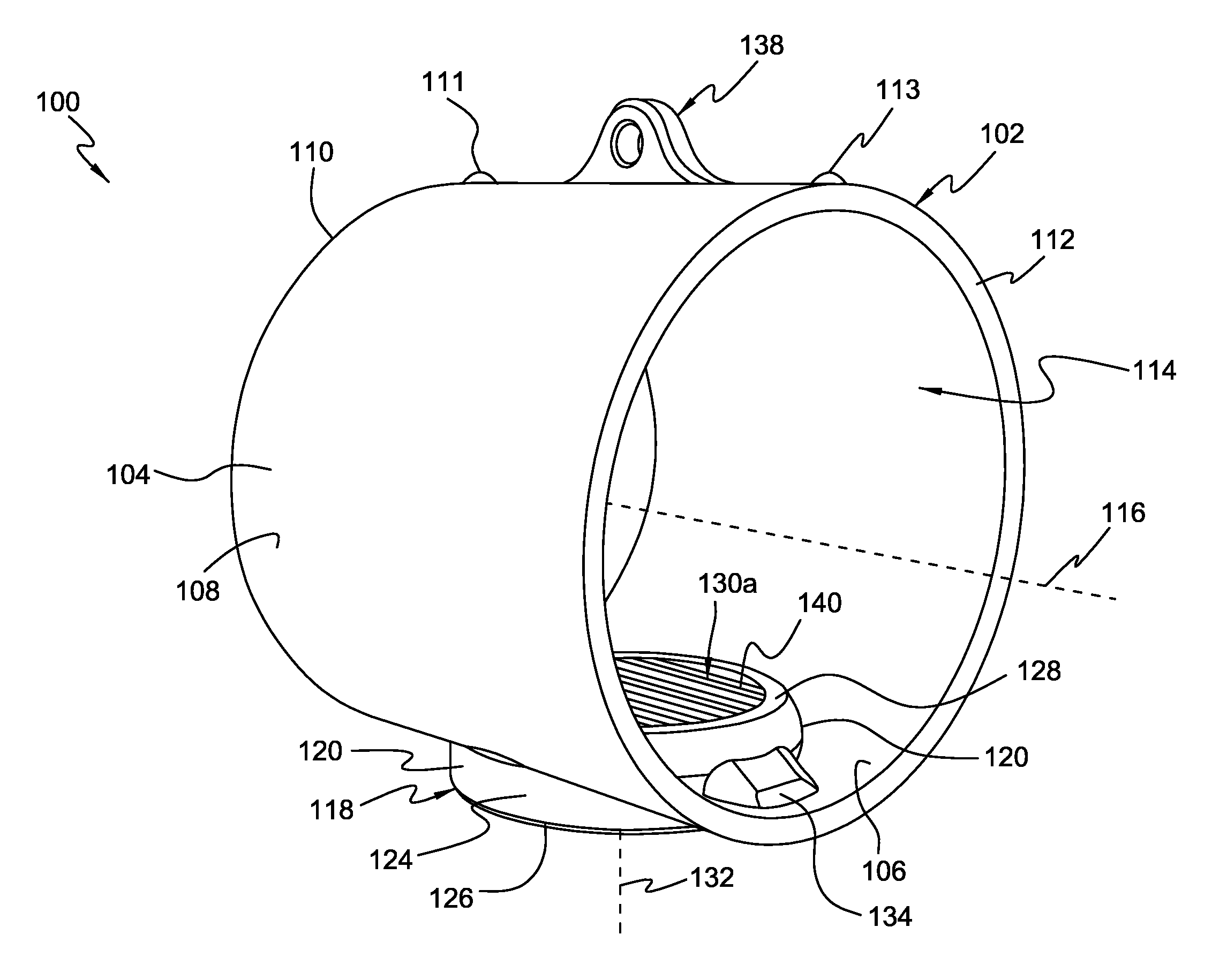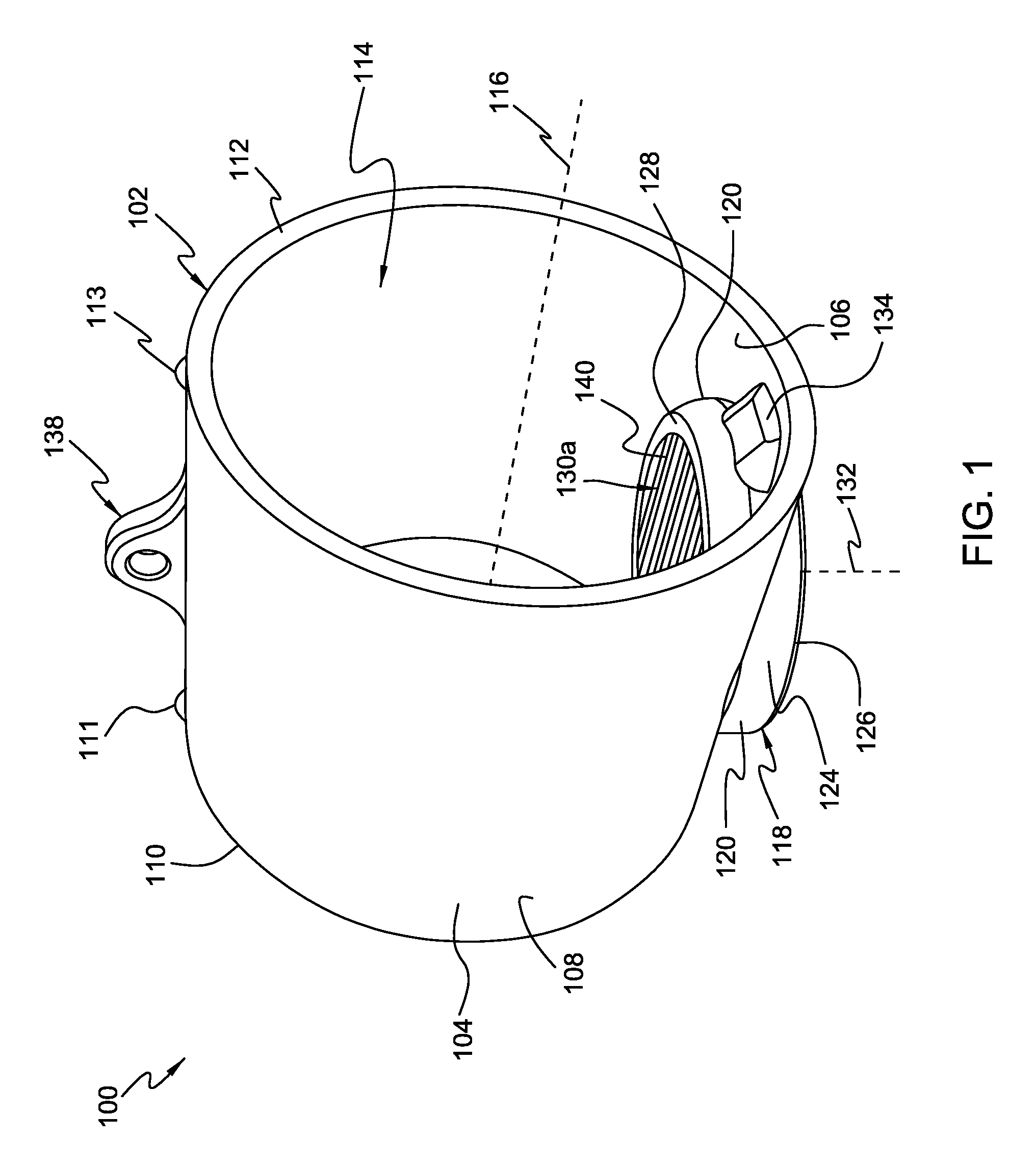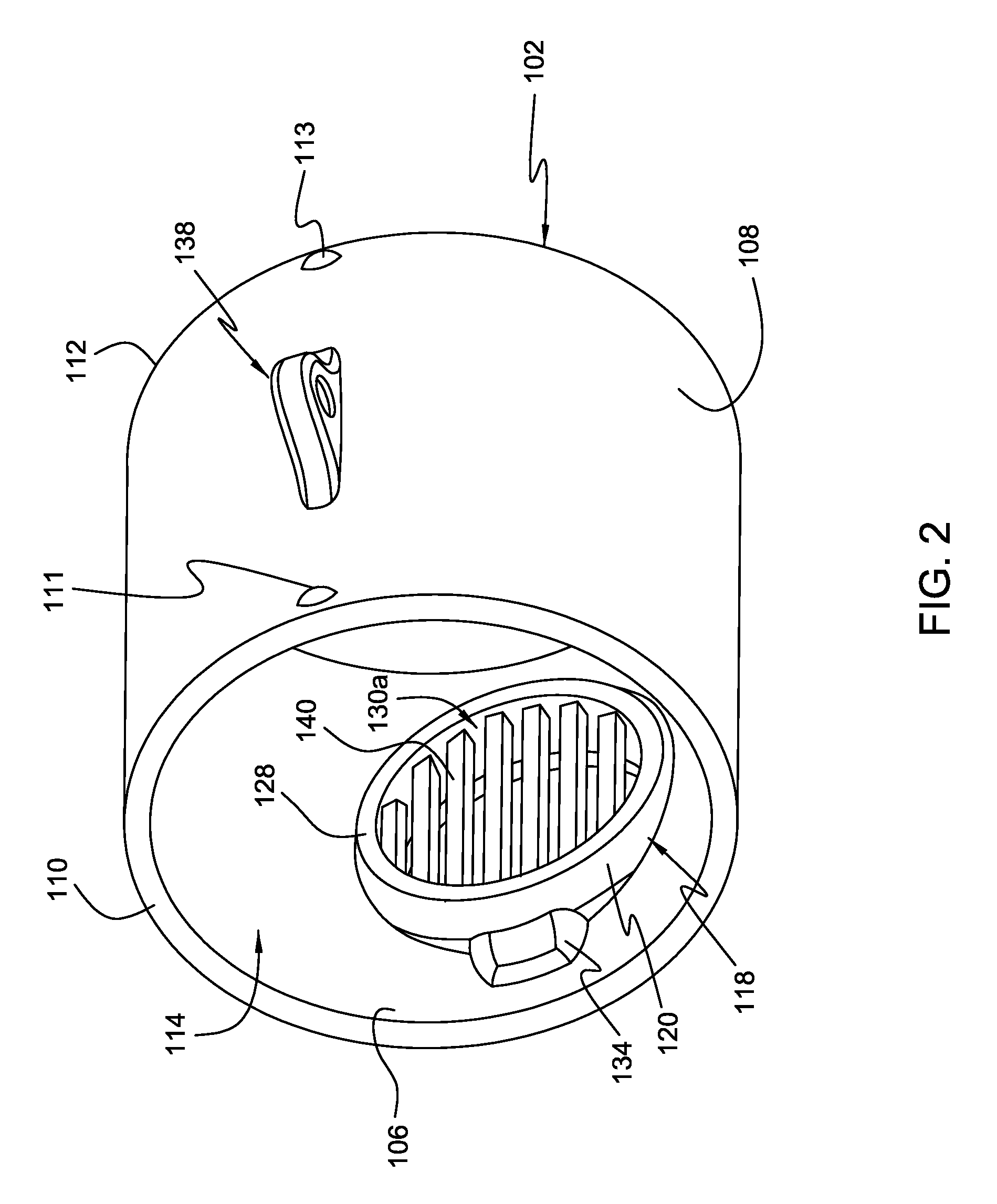Inline air treatment device
a technology of air treatment device and inline ductwork, which is applied in the direction of lighting and heating apparatus, heating types, transportation and packaging, etc., can solve the problems of obstructing airflow, inefficient air treatment, and high installation cost of existing inline ductwork odor management system, so as to increase the power demand of blowing components, increase maintenance costs, and increase installation costs
- Summary
- Abstract
- Description
- Claims
- Application Information
AI Technical Summary
Benefits of technology
Problems solved by technology
Method used
Image
Examples
Embodiment Construction
[0032]FIGS. 1-7 present various views of an airflow treatment device 100 that is configured to treat air in an air handling system. As will be discussed in more detail herein, the airflow treatment apparatus or device 100 is configured to be installed inline in the ductwork of an air handling system (e.g., HVAC system) in a manner that is substantially free of obstructing the airflow through the ductwork or requiring any supplemental power to treat the airflow passing by the treatment device. The disclosed airflow treatment device can also be maintained substantially free of any interruptions, disassembly or downtime to the air handling system after initial inline installation of the disclosed airflow treatment device 100.
[0033]Broadly, the device 100 includes a first body 102 having a first wall 104 with opposite inner and outer surfaces 106, 108 and opposite first and second open free ends 110, 112. The first wall 104 defines an airflow passageway 114 through the device 100 that e...
PUM
| Property | Measurement | Unit |
|---|---|---|
| angles | aaaaa | aaaaa |
| angles | aaaaa | aaaaa |
| angles | aaaaa | aaaaa |
Abstract
Description
Claims
Application Information
 Login to View More
Login to View More - R&D
- Intellectual Property
- Life Sciences
- Materials
- Tech Scout
- Unparalleled Data Quality
- Higher Quality Content
- 60% Fewer Hallucinations
Browse by: Latest US Patents, China's latest patents, Technical Efficacy Thesaurus, Application Domain, Technology Topic, Popular Technical Reports.
© 2025 PatSnap. All rights reserved.Legal|Privacy policy|Modern Slavery Act Transparency Statement|Sitemap|About US| Contact US: help@patsnap.com



